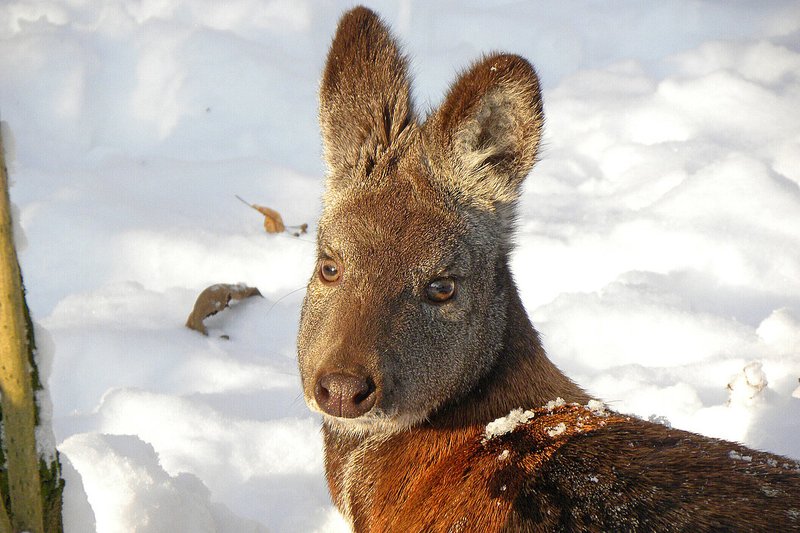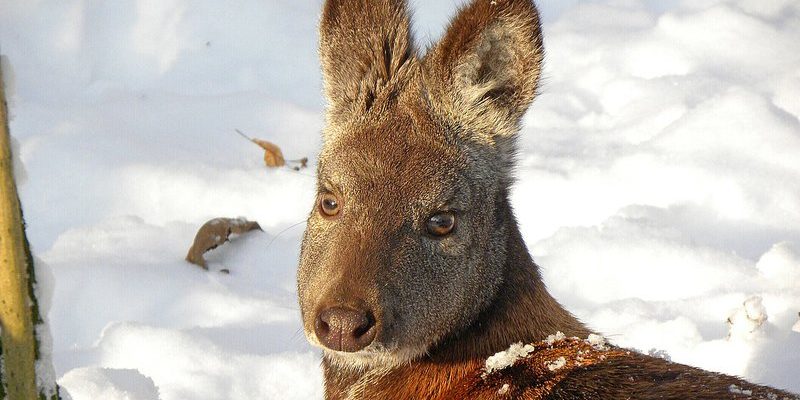
Musk deer aren’t your typical deer. They’re small, often solitary, and have a distinctively musky scent that gives them their name. Their nurturing behaviors, however, can be just as robust as those of more well-known wildlife parents. Let’s dive into how these remarkable animals care for their young, exploring their instincts, behaviors, and some challenges they face along the way.
Finding the Right Spot: Nesting and Habitat
Musk deer are very particular about where they choose to give birth. They look for secluded areas away from predators and human disturbances. Think of it like finding the perfect cozy corner in a busy café where you can enjoy your coffee without being interrupted. Musk deer often pick dense thickets or hidden spots under bushes, providing natural camouflage and protection for their fawns.
Once they’ve found a suitable location, the mother deer prepares a small nest by making a shallow depression in the ground. This is where she’ll soon give birth. The cover provided by foliage not only hides her but also keeps her young safe from the prying eyes of predators. After giving birth, she stays very close to her fawns, keeping them warm and secure.
After Birth: The First Moments
The moment a musk deer fawn is born, it’s crucial for its survival. While the fawn is still wet and weak, the mother licks it dry and encourages it to stand up quickly. This is a bit like the first training wheels on a bike—an essential step for the little one to learn how to navigate its new world. Within a few hours, a fawn can usually stand and walk, making it ready to move with its mother.
Musk deer fawns are incredibly vulnerable during these early days. They rely heavily on their mothers for food and security. Mothers often stay close by, using soft calls to communicate with their young. If a predator comes near, the mother will quickly lead her fawn to safety, sometimes even hiding it under foliage while she distracts the threat.
Feeding: The Importance of Milk
As with most young mammals, milk is the primary source of nutrition for musk deer fawns. In these early weeks, the mother’s milk is loaded with everything the fawn needs to grow strong. Honestly, it’s like the ultimate superfood, packed with nutrients and antibodies crucial for building immunity.
The mother usually nurses her fawn frequently throughout the day. You might wonder how she balances this with foraging for food. Well, she often combines the two. After nursing, she’ll eat nearby leaves or grass, making sure her fawn stays close. This dual action not only helps her maintain her strength but also keeps the little one safe and nourished.
Independence: Leaving the Nest
As the fawn grows, it begins to explore its surroundings more. Typically, by the time they’re around 2 to 3 months old, they start to nibble on solid foods, like tender leaves and young shoots. This transition is similar to teaching a child to ride a bike—at first, they need a lot of guidance, but soon they become more confident and independent.
During this time, mothers play a critical role in teaching their young about their environment. They show them where to find food and how to identify dangers. You could say it’s a crash course in survival! While the fawn may wander away to explore, mothers always keep a close watch, ready to intervene if the little one strays too far.
The Challenges of Raising Fawns
Raising young musk deer isn’t without its challenges. Beyond the usual threats from predators, mothers have to contend with habitat loss from human encroachment and climate change. These factors can limit their choices for safe nesting spots and food availability. It’s like trying to raise a family in a neighborhood that keeps changing; stability becomes a major concern.
Mothers also face competition for resources with other wildlife. Sometimes, they must move to new areas to find food. This can lead to a stressful situation if they have to uproot their fawns and find another safe space, especially if they’re still reliant on milk. It’s a tough balancing act, navigating the needs of their young while ensuring their own survival.
The Role of Social Structures
Interestingly, while musk deer are generally solitary animals, their social structures come into play during mating and rearing periods. Mothers will sometimes congregate in areas where food is abundant. This is not just for convenience; it’s a survival tactic. If several mothers and their young gather in one place, they can keep a better lookout for threats.
Additionally, these social groupings allow fawns to interact with one another, which helps them develop social skills they’ll need later in life. Watching other young deer play and interact can be a learning experience, refining their instincts and behaviors as they grow.
Raising young in the wild is no small feat, and musk deer mothers exemplify resilience and strength in their parenting. From selecting a safe nesting spot to teaching their fawns the essentials of survival, these mothers showcase a unique blend of nurturing and instinctive behavior.
The challenges they face only highlight how remarkable these creatures are. By understanding how musk deer raise their young, we gain insight into the complex world of wildlife parenting and the ongoing battle for survival in nature. Every little detail, from feeding to teaching, showcases their determination to ensure their offspring thrive in a sometimes harsh environment. So the next time you think of a deer, remember the quiet strength and dedication of the musk deer mother raising her young in the wild.

